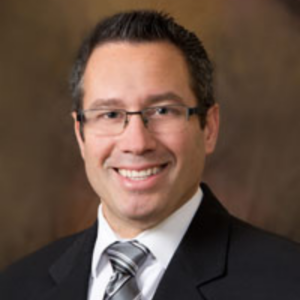Social media’s double-edged sword
Imagine that Happy Daze Nursing Home has a Five-Star rating by the Centers for Medicare and Medicaid Services (CMS), meaning that it is rated as “much above average.” Its residents all seem happy and well-cared for and its staff members are professional and eager to come to work every day. And then, it all comes crashing down: The media reports that a nurse aide posted a humiliating and degrading picture of a resident on her Facebook page. Sound incredible? Unfortunately, the hypothetical situation above plays out all too frequently.
Social media can be a very effective tool in a facility’s marketing and public relations material. “We see social media as a low-cost medium we can use to tell positive stories about the loving environments we create for our patients and residents,” says Lea Volpe, Vice President of Communications and Brand for PruittHealth, a large non-acute care provider in the Southeast. “But we also see it as a risk and have worked hard to ensure we have the policies and practices in place to train employees, monitor online content and address concerns and issues quickly and effectively.”
Unfortunately, social media can be a significant problem when used inappropriately. Fueled by reports of disturbing images and videos of nursing home residents being posted on social media sites such as Facebook, Instagram, Snapchat and others, the Centers for Medicare & Medicaid Services (CMS) issued a directive to all State Survey Agency Directors in August 2016. By now, all nursing facilities should have reviewed and revised their policies and procedures regarding social media. Still, the legal points are worth reiterating, since new cases continue to surface.
In May 2017, the family of an Austin, Texas nursing home resident whose pictures were posted on social media sued the nursing home for more than $1 million. The pictures posted on Snapchat allegedly showed an 83-year-old resident who has Alzheimer’s disease covered in what appeared to be feces. According to published reports, the nursing home reported the incident to law enforcement and suspended the offending nurse aide, who was arrested, charged with a misdemeanor and subsequently fired. Still, the nursing home will have to deal with the law suit filed by the resident’s family as well as any potential enforcement actions by CMS and/or the Texas Department of Aging and Disability Services. Ideally, other providers will learn valuable lessons from this disturbing case and take a proactive approach to policies and staff training.
Federal Requirements
CMS requires all nursing facilities that participate in the Medicare and Medicaid programs—the overwhelming majority of nursing homes—to have policies and procedures “that prohibit staff from taking, keeping and/or distributing photographs and recordings that demean or humiliate a resident(s).” [i] Facility management needs to understand that CMS extends the requirement beyond nursing home “staff” to include volunteers, contractors, consultants and other caregivers who provide care and services to residents on behalf of the nursing home.
What constitutes humiliation?
CMS regulations require that facilities review and revise their abuse prevention policy and procedures to specifically address the issue of prohibiting staff (and others) from taking or disseminating photographs or videos that might “demean or humiliate” a resident. However, prudent risk management suggests a facility may want to go beyond CMS’ directives. For example, what exactly constitutes “humiliating,” or “demeaning” photographs?
The author suggests that providers not leave that determination up to surveyors who will use the “reasonable person” standard or employees who might have a very different notion of what constitutes humiliating or demeaning photographs. Even a well-intentioned employee who posts a photograph of a resident eating a piece of birthday cake with his or her fingers might be accused of posting a photo that is demeaning to the resident and or family. Without proper authorization, the photo posting also could be a HIPAA violation.
Consent
CMS notes there may be situations where a resident is unable to give consent because of a cognitive impairment, such as Alzheimer’s disease or other forms of dementia. Simply because a resident did not refuse to consent to a photograph or could not verbalize a response will not excuse a facility from its obligation to protect residents’ privacy and dignity. In situations where a resident may not be able to verbalize consent or a refusal, CMS directs surveyors to “evaluate how the reasonable person would react under such circumstances.” Further, even if a resident consented to a photograph or video that might not be sufficient. If a photograph or video lacks appropriate authorization, its dissemination could result in a HIPAA violation, which would trigger other reporting obligations for a facility.
Protecting residents from exploitation and abuse
The most salient concern when addressing social media in long-term care is protecting residents from exploitation and abuse. ProPublica reported on several cases of social media abuse in its 2015 publication, “Inappropriate Social Media Posts by Nursing Home Workers, Detailed.” [ii] These articles and others have led Senator Chuck Grassley, Chairman of the Judiciary Committee among others, to question both the Health and Human Services Office of the Inspector General and the U.S. Department of Justice about their efforts to address this growing concern.[iii]
Many facilities are doing their part to confront the potential pitfalls of social media. “We have embraced social media as a way to expand our digital presence and help more people, including families who live great distances and welcome and rely upon social media as a way to stay in touch with their loved ones,” says Missy Highley, RN, BSN, Vice President of Business Partnerships at Signature HealthCARE. “Social media has been utilized as a channel to build our own voice and positively interact with our customers. While utilizing social media as a platform to share our personality, our first priority is to protect our residents. We protect our residents by being a resident advocate, and among other things, securing the appropriate resident consent and training staff on permissible use of social media.”
Policy and procedures
Even the most sterling and well-crafted set of policies and procedures will be of little use if it just sits in a binder in the administrator’s office. Like all policies and procedures, they need to be implemented effectively and monitored to ensure compliance. Since facilities are now required by CMS to have a compliance and ethics program, it seems like a good idea to involve the compliance and ethics component of a facility’s operation in addition to the QAPI committee when reviewing and revising the social media aspect of the abuse policy.
“We work very closely with our compliance department, training teams and local administrators to teach all of our employees about the reasons behind our social media policy and our centralized approach to managing our content on social media,” Volpe says. “The more they understand what our risks are as an organization, and the role they play in protecting our patients and our company, the more engaged they are in participating.”
When revising abuse policies and procedures that address social media, facilities should be aware of both the CMS requirements as well as recent guidance from the National Labor Relations Board (NLRB). At a minimum, the policy and procedure should address training of all employees (and non-employees who provide care to residents) regarding the use of cameras and smart phones and the appropriate facility responses, including the obligations for reporting an incident. Random audits and monitoring for compliance can be incorporated into a policy.
Apart from protecting residents, which is the paramount concern, facilities should be careful to protect themselves from a former employee who was terminated for violating the facility’s social media policy. Many people mistakenly believe that the NLRB’s decisions and guidance only applies to union employees. The National Labor Relations Act’s (NLRA) provisions apply to all employees whether they are in a union or not. According to the NLRB, “The National Labor Relations Act protects the rights of employees to act together to address conditions at work, with or without a union. This protection extends to certain work-related conversations conducted on social media, such as Facebook and Twitter.” [iv]
There have been several instances where an employer terminated an employee who violated its social media policy only to have the employee sue for wrongful termination and have the NLRB uphold the rights of the former employee. Therefore, it behooves a facility to be aware of the guidance from the NLRB regarding social media policies. For example, a social media policy that is overly broad, uses vague or ambiguous terms may not be adequate to protect a facility from legal action by a terminated employee. One way of avoiding such a problem is to give specific, detailed examples of what would be considered inappropriate and prohibited activities regarding social media.
Social media has become a ubiquitous part of business and personal lives. While it can be a significant tool in getting a positive message to prospective residents and their families, facilities must be diligent to ensure it is not used inappropriately by misguided staff.
[i] A copy of the CMS Survey and Certification Memo, Protecting Resident Privacy and Prohibiting Mental Abuse Related to Photographs and Audio/Video Recordings By Nursing Home Staff, is available at: https://www.cms.gov/Medicare/Provider-Enrollment-and-Certification/SurveyCertificationGenInfo/Downloads/Survey-and-Cert-Letter-16-33.pdf.
[ii] Available at: https://www.propublica.org/article/inappropriate-social-media-posts-by-nursing-home-workers-detailed
[iii] For example, see, “Grassley Seeks Response from Justice Department on Social Media Exploitation of Nursing Home Residents,” available at: https://www.grassley.senate.gov/news/news-releases/grassley-seeks-response-justice-department-social-media-exploitation-nursing-home.
[iv] The National Relations Labor Board has webpages dedicated to social media cases it has decided as well as guidance it provides. The NLRB guidance may be found at: https://www.nlrb.gov/news-outreach/fact-sheets/nlrb-and-social-media.

Alan C. Horowitz, Esq., is a partner at Arnall Golden Gregory LLP, where he focuses his legal practice on regulatory compliance for skilled nursing homes, hospices and home health agencies and manages cases where the Centers for Medicare and Medicaid Services (CMS) has imposed an enforcement action. He is a former assistant regional counsel Office of the General Counsel, U.S. Department of Health and Human Services. As counsel to CMS, he was involved with hundreds of enforcement actions and successfully handled appeals before administrative law judges, the HHS Departmental Appeal Board and in federal court. He also has clinical healthcare experience as a registered respiratory therapist and registered nurse. He can be reached at alan.horowitz@agg.com.
Related Articles
Topics: Alan C. Horowitz , Business Marketing Including Social Media and CRM , Executive Leadership , Regulatory Compliance , Technology & IT










